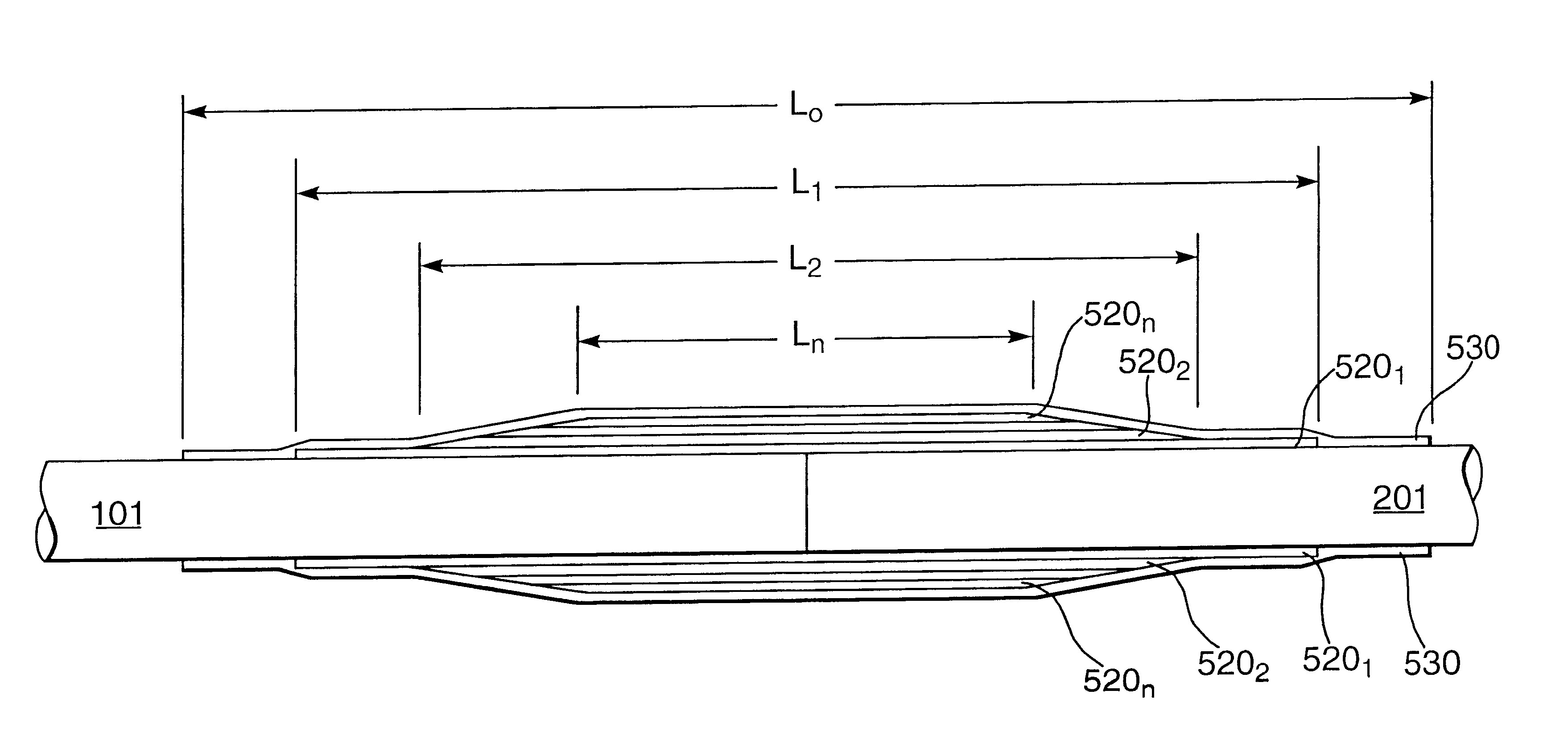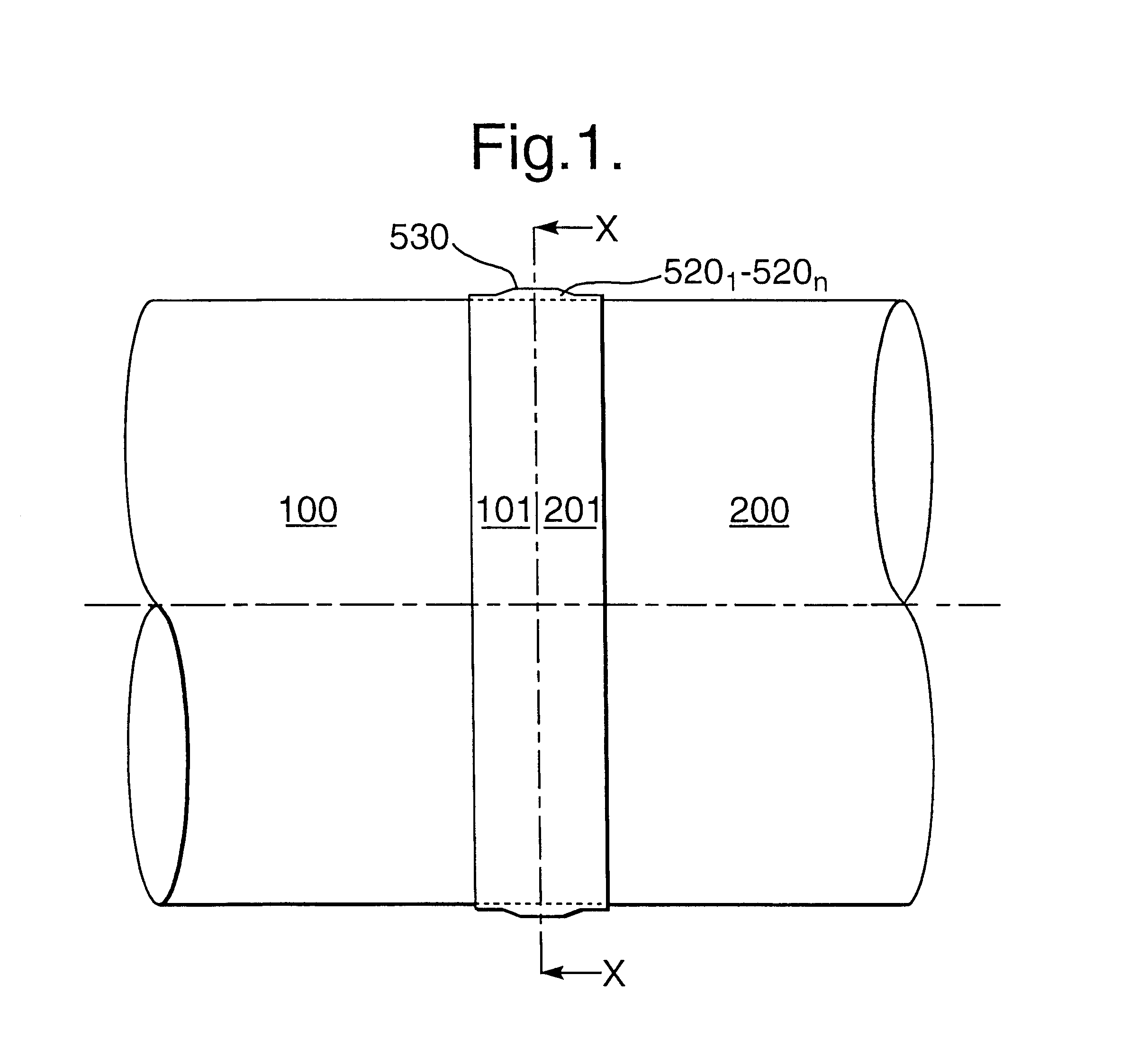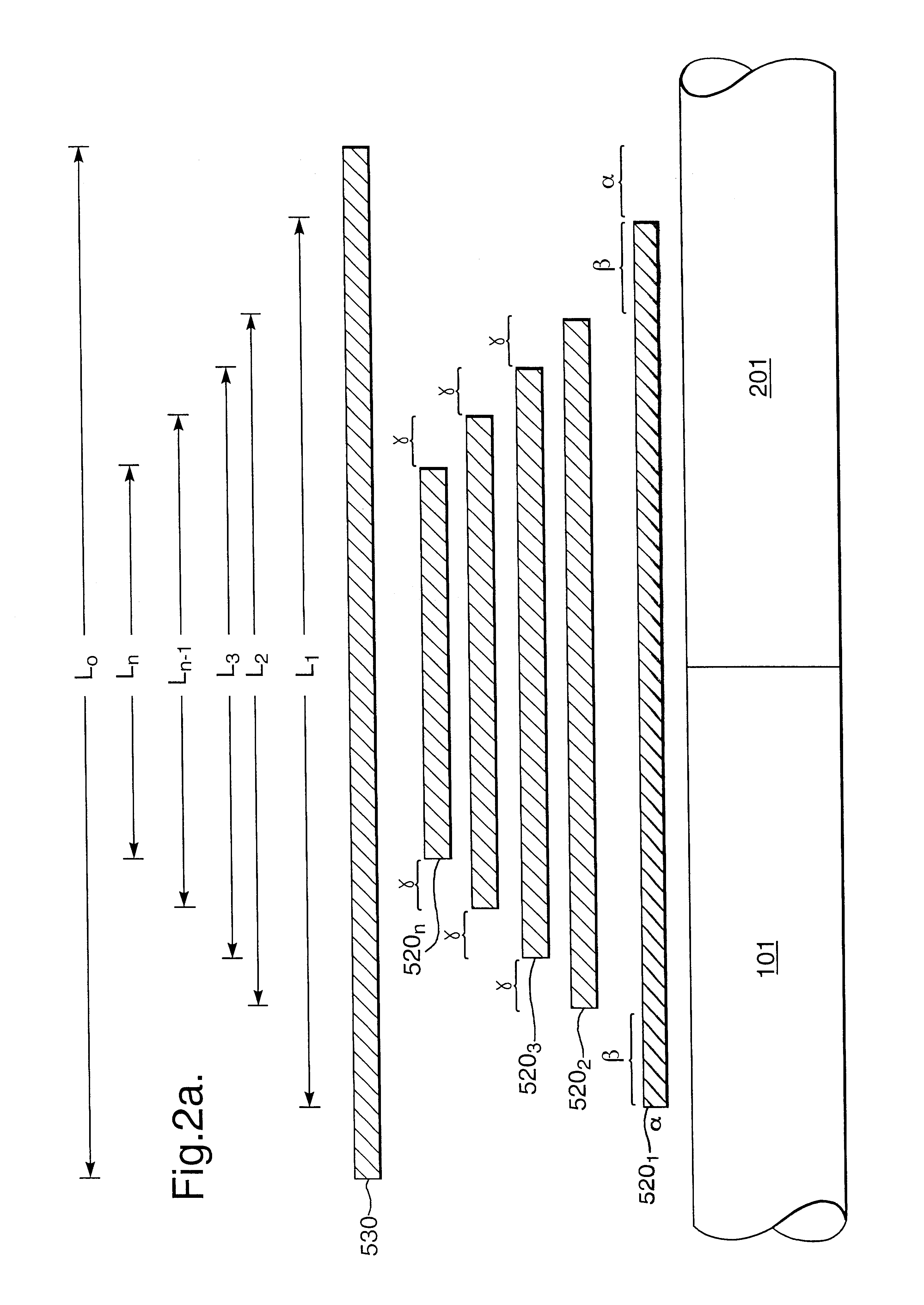High-strength butt-wrap joint for reinforced plastic pipes
a technology of reinforced plastic pipes and buttstraps, which is applied in the direction of fluid pressure sealing joints, hose connections, mechanical equipment, etc., can solve the problems of negative affecting the performance of buttstraps, overly conservative and costly buttstraps, etc., and achieve the most efficient control of radial stresses, increase the longitudinal stiffness of laminates, and minimise the eccentricity of wraps
- Summary
- Abstract
- Description
- Claims
- Application Information
AI Technical Summary
Benefits of technology
Problems solved by technology
Method used
Image
Examples
Embodiment Construction
The invention will now be described with reference to the accompanying drawings (FIGS. 1-5), where like items are identified by respective reference numbers.
FIG. 1 shows a butt wrap joint made up of two aligned pipes 100, 200 with respective abutting pipe ends 101, 201 (shown by dotted lines). The pipe ends are wrapped with a number of layers (or wraps) 520.sub.1 -520.sub.n (shown by dotted lines) of a material wetted with a thermosetting resin and covered by a chopped strand mat (CSM) 530, also wetted with a thermosetting resin.
FIG. 2a is a diagrammatic (and exploded) illustration of the general build-up of a laminate made up of n wraps, and shows, in ascending order from the pipe surface 100, 101, 200, 201 (only one side of pipes shown, pipes partly shown):
First wrap 520.sub.1 having a width L.sub.1 in the pipe longitudinal direction;
Second wrap 520.sub.2 having a width L.sub.2 in the pipe longitudinal direction;
Third wrap 520.sub.3 having a width L.sub.3 in the pipe longitudinal ...
PUM
| Property | Measurement | Unit |
|---|---|---|
| diameter | aaaaa | aaaaa |
| pressure | aaaaa | aaaaa |
| pressure | aaaaa | aaaaa |
Abstract
Description
Claims
Application Information
 Login to View More
Login to View More - R&D
- Intellectual Property
- Life Sciences
- Materials
- Tech Scout
- Unparalleled Data Quality
- Higher Quality Content
- 60% Fewer Hallucinations
Browse by: Latest US Patents, China's latest patents, Technical Efficacy Thesaurus, Application Domain, Technology Topic, Popular Technical Reports.
© 2025 PatSnap. All rights reserved.Legal|Privacy policy|Modern Slavery Act Transparency Statement|Sitemap|About US| Contact US: help@patsnap.com



